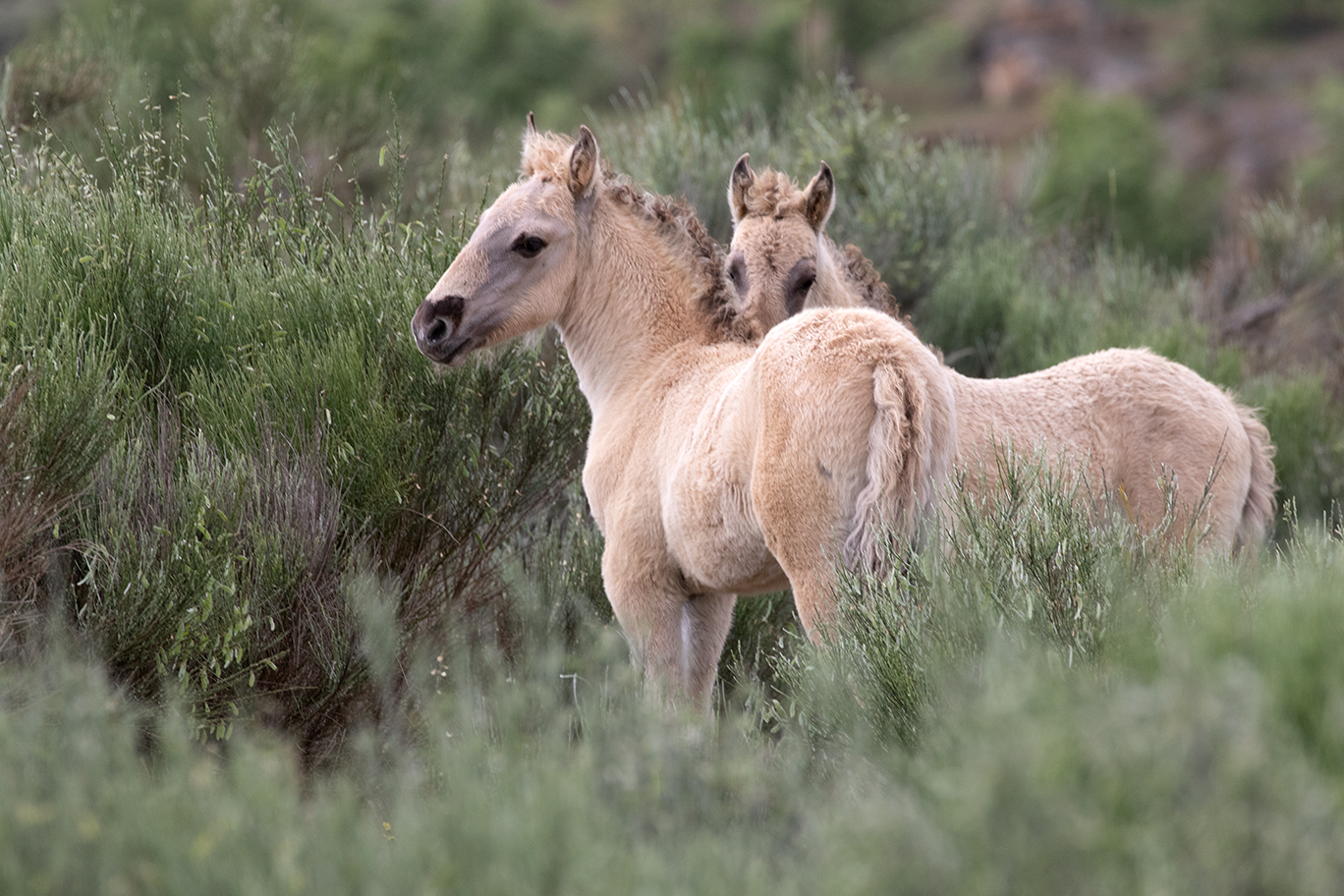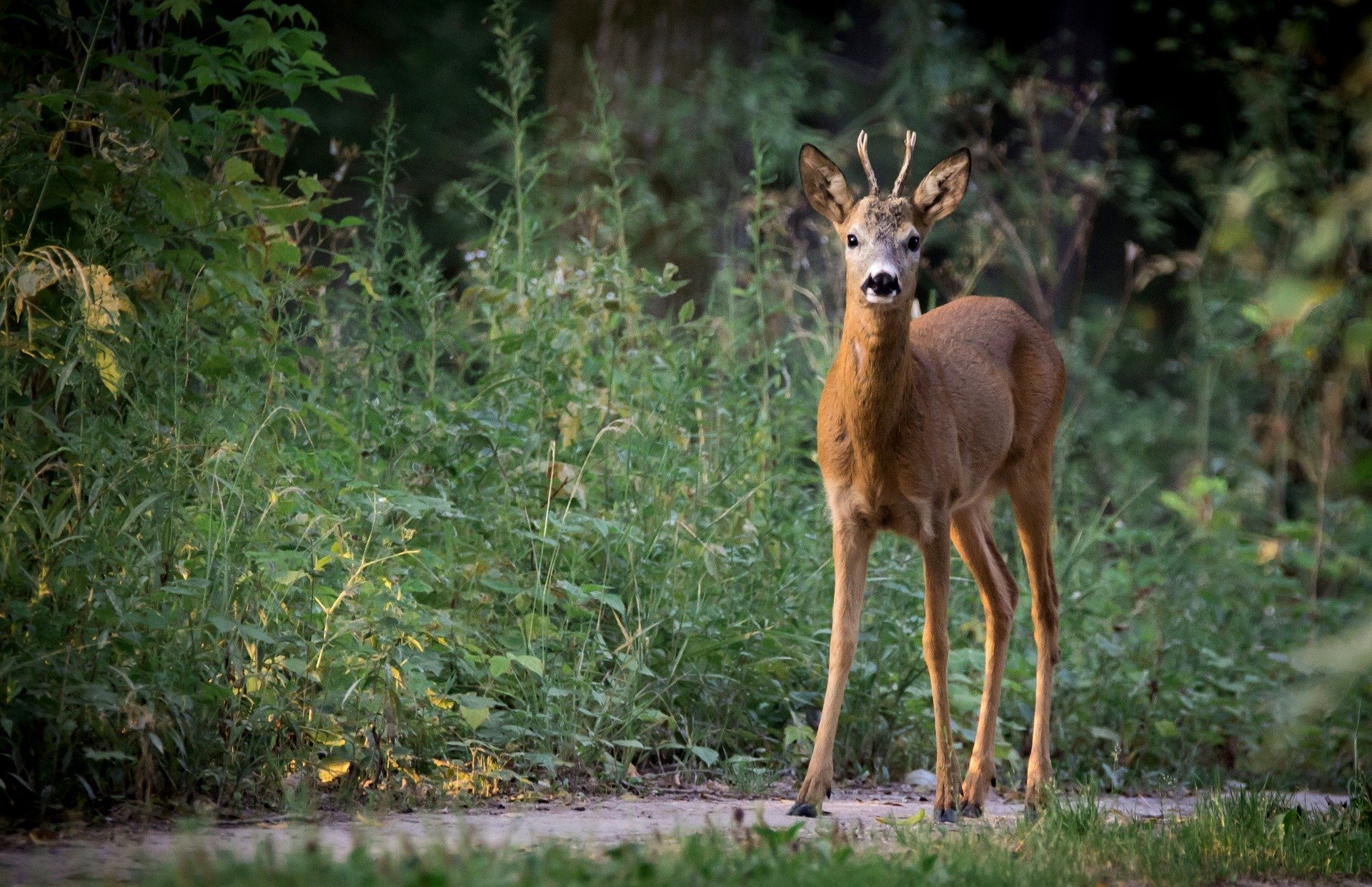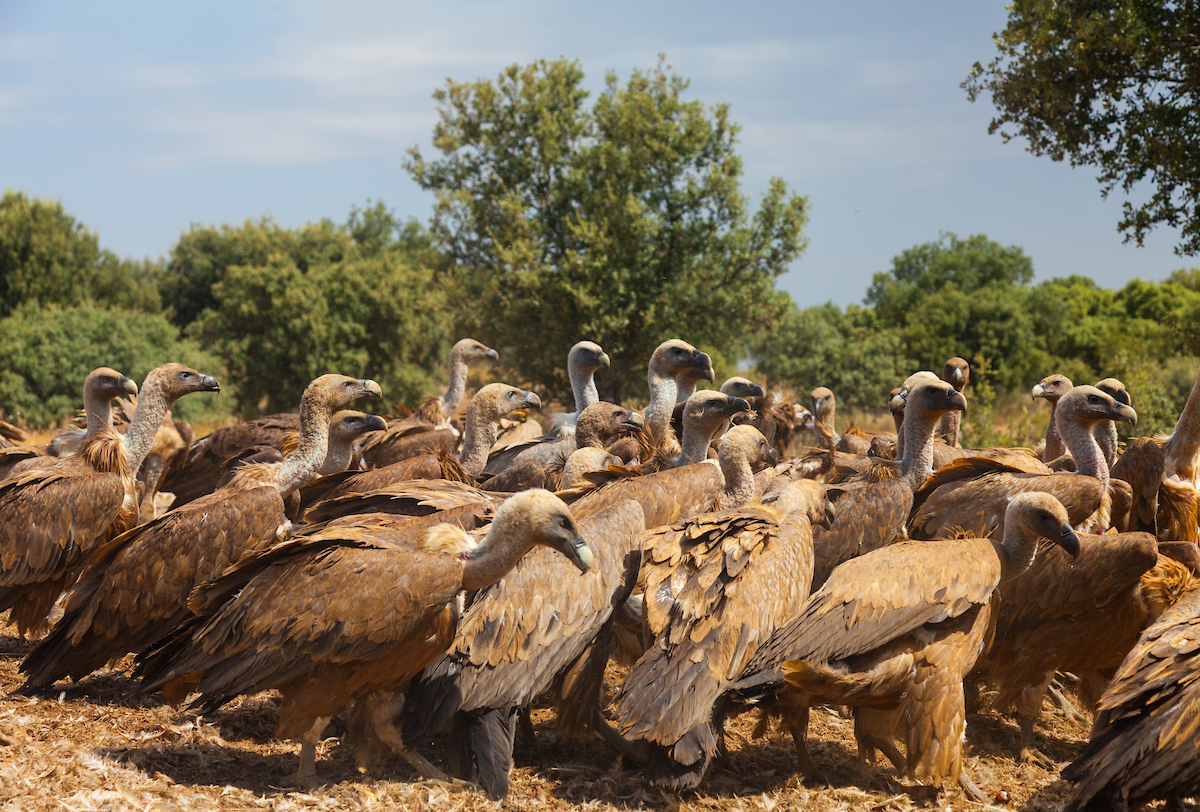
Natural Grazing
Because of its poor granite soils, the Côa Valley is facing the highest rates of land abandonment in Portugal. Bush encroachment and plantation of pine monocultures have made the landscape extremely vulnerable to large scale rural fires.
Due to this, there is a growing potential in the region to develop alternative land use models based on natural grazing of the area, thus creating landscape mosaics that function as natural firebreaks.
The project will map areas where natural grazing can be implemented and identify properties and interested stakeholders with whom to collaborate. Agreements will be signed, and grazing protocols will be elaborated. The goal is that natural grazing with Tauros and/or horses creates and maintains a mosaic of habitats that reduces fire risk and supports populations of main prey.

Prey Availability
The project aims to strategically increase the population of roe deer, particularly in areas where it can play a role as a natural prey of wolf. Baseline information about the number and distribution of wild ungulates will be carried out and this data will be used to compare the situation of the wild ungulates in the area before the start of the releases and after the completion of the project. A social viability study will also be carried out.
Once this baseline has been determined, all the necessary steps to implement habitat restoration measures and roe deer restocking will be prepared. Areas for reinforcement of roe deer will be selected within the Natura 2000 areas of Douro International, Vale do Côa and Malcata. In addition to the monitoring of roe deer, the project team will also monitor rabbit and partridge, as these species are important prey for Bonelli’s and golden eagle. Finally, the project will identify and remove barriers to the dispersal of red deer from the Malcata Nature Reserve into the Côa Valley. Possible corridors will be identified, and deer lures will be tested in order to determine whether they can accelerate the expansion of red deer into new areas.

Scavengers
Currently, carcasses are removed from farms, so they are just available for scavengers until they are noticed by farmers and buried or remove by SIRCA services. In order to guarantee a minimum supply for scavengers, the government has promoted the existence of vulture feeding stations. However, the Spanish-Portuguese border might act as a barrier for vultures due to the restrictive sanitary policy in Portugal.
Recently, legislation has been changed and a new procedure now allows some carcasses to be left in specific locations outside vulture feeding stations. The project will take advantage of this change and make proposal to develop and implement the procedure, mainly through creating a network of certified livestock producers.
Griffon movements in the Côa Valley
Below you can explore the movements of the griffon vultures we have tagged as part of this project, as they soar through the landscape looking for food and resting places – in the Côa Valley, northeastern Portugal and Spain.